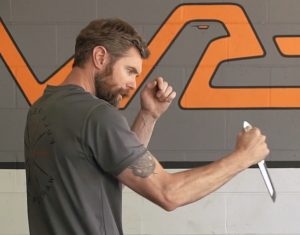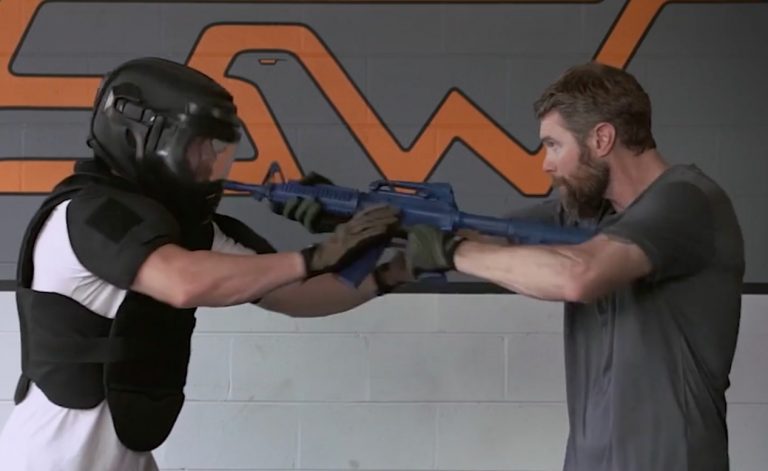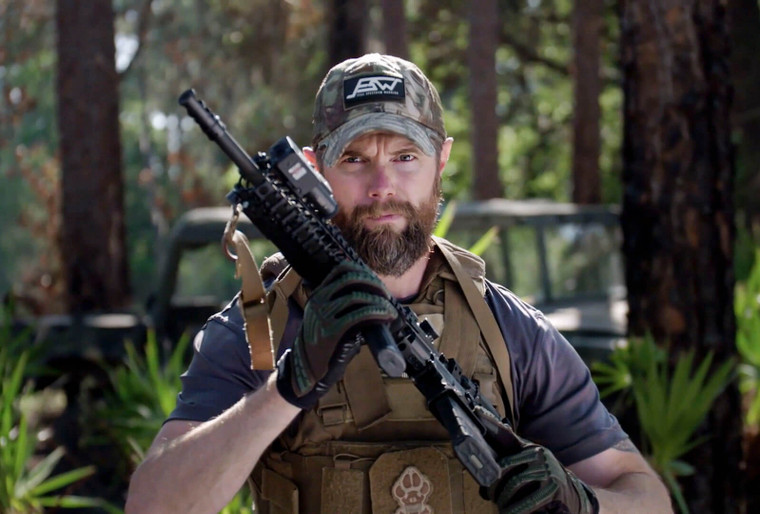Simple But Deadly with Rich Graham
Mar 31st 2021
Rich Graham is a former Navy SEAL who developed a defense system after years as a Muay Thai boxer and then as an operator on the SEAL teams. These are battlefield-tested tactics that are effective for self-defense and devastating to adversaries, no matter what weapon you have–knife, pistol, rifle, or bare hands.
Our friend Clint Emerson, New York Times best-selling author of 100 Deadly Skills and Escape the Wolf, met with Rich to learn how we can train ourselves to make his techniques a natural response against attackers.
These are particularly useful skills to have ready for close-quarters combat. For each of the techniques, Rich encourages his students to train repeatedly so that the movements become wired into muscle memory.
The Importance of the Circular Motion

To begin, the foundation of each movement is a circular motion that allows for a powerful strike and a powerful withdrawal that helps you maintain control of your weapon and hands. Striking out and drawing back in a circular motion also allows you to maintain momentum and movement so that your strikes are fluid and versatile.
For example, when holding your knife in a reverse grip, the knife blade can become part of a forearm blocking movement that also inflicts damage to the attacker. In this position, the knife slices the opponent as you block. Then slicing past that assaulting appendage toward their throat or body and back–blocking, slicing, and retracting all in fractions of a second–all by using a circular motion.
Rich says to picture the circular movement like the connecting rods on the wheels of old timey trains–the bars that make the wheels turn together by moving in a circular motion. The elbows never fully lock before drawing back.
A Powerful, Flexible Grip
Holding your tools with the right grip can add force to your strikes and help you maintain control of the weapon. Holding a knife firmly, but not too tightly, keeps your arms limber enough to deliver the strike. He says to add tension at the end of the strike so that it has a whip-like effect.
“I don’t want to put so much grip tension on the weapon–knife, gun, flashlight, whatever–that I can’t move my arm,” Rich says. “The tighter my grip is, the stiffer my arm will be. So just like in boxing, I keep things loose until the moment of impact. Snap. Retract.”
The Versatility of Weapons/Tools
The beauty of Rich’s system is its simplicity across platforms and its ability to help you keep your weapons out of the enemy’s hands. If you’re caught off guard, being able to turn a pistol or rifle into a striking tool could be the difference between life or death.

So, you can jab the soft tissue of the face, neck, etc, with the barrel of a rifle or pistol. The barrel of a rifle can act like a spear to an adversary, and the effect can be devastating.
Using the length of a rifle to deploy a breaker strike (using the gun across the forearm instead of the bare forearm itself) followed by a violent, raking withdrawal can be damaging and even lethal if applied with enough force.
Learning, Practice, Repetition
As with any of the skills taught by these elite warriors, Rich’s technique is only effective if learned carefully, practiced appropriately, and repeated regularly in the context of real world scenarios and simulation.
Once the movements are locked into muscle memory, it’s important to keep those skills strong, ready, and automatic.
In the video, you’ll learn the basic movements, stances and applications based on available weapons and depending on situations.
To watch Clint Emerson’s full interview with Rich Graham and other defense experts, subscribe to the Warrior Poet Network.
Be on the lookout for more warrior profiles on our blog.

